Khalid Khatri resides in the village of Ajrakhpur, about 15 km from Bhuj in Gujarat. At 23, he is a recognised talent and nonconformist in the respected Khatri community – which is best known for its indigo-and-madder block printed cloth, Ajrakh. Khalid infuses asymmetry into block printing — an art form that is traditionally and fundamentally symmetric. This decision might appear simple, but coupled with his approach it is enough for those in his village to affectionately call him ‘the crazy one’.
Excerpts from an interview, translated from Hindi:
How much has your family lineage (of karigars) contributed to who you are today?
I always dreamt of having my own workshop and becoming a very good karigar. My father used to be one until he injured his back lifting gunny sacks filled with harde powder (used in dyeing). In 2008, at the age of 15, I started working on block printing. I thought it was a better way to earn money than the other jobs in the village. Besides, I wanted to revive my father’s old workshop and apply block printing in a new way. My great grandfather, grandfather, and all my uncles used to work with Ajrakh; it is our ancestral profession.
Today, my younger brother helps me when he gets time off from his studies. My mother and three sisters do bandhani (tie-dye work). I support my family by giving money to run the house.
Above: image | Khalid with his mother and sisters
Coming from a family of master craftsmen, you decided to study textile design. Why?
In 2010, one of the elders of our community, Dr Ismail Mohammed Khatri, pushed me to join the textile design course at Kala Raksha Vidyalaya (KRV). Every year some artisans from our community enroll for the course, and that year, he encouraged me. They taught us about colour, design, market orientation, concept, collection development, and presentation. It was there that I learned to design collections based on a theme or concept; something which I have since incorporated in my work. At KRV, they used to encourage us to be traditional but with a modern twist.
What additional skills do you think would make you better at your work?
I used to wish I knew English better, but now I understand a bit and it doesn’t seem like a big deterrent. I do strongly feel that if I had an art education, I’d be a better karigar. Studying different styles and techniques of painting would improve my hand painting skills. And knowledge of art brings a certain finish which is unmatched.
Above: image | hand painted stoles in development
What do you think differentiates your work?
Our community has been doing Ajrakh block printing for so many years now that it has become second nature. Most artisans don’t think much before making a design. But I like to use my mind and think a lot before I conceptualise a collection. I try to think of a fresh or interesting theme. And then, create a design that no one else has made before.
I make unique concept-based collections, and my designs are more modern than traditional. I prefer doing asymmetric designs even though traditionally, block printing involves only symmetric patterns. If, on order, I have to print a symmetric pattern, I make sure it’s different. For example, other block printers follow the traditional process of stamping the first, second and third block. While I stamp all three blocks as well, under that I add a small thin design, like a border.
Above: image | Jaipur’s Hawa Mahal on a mural
Is it more commercially viable to be different, or does the desire stem from some other place?
I feel that if you can differentiate yourself, you can be successful as a craftsman because it is not easy to be creative and unique, and people value that combination. Work that is like no other gets you a name and appreciation. That’s why I like to keep innovating my block print work. Another benefit of being different is you don’t hurt people’s feelings; no one can say you copied them or stole their clients.
But honestly, it’s not me who claims my work is different, nor do I promote it that way. It’s other people who say it. When customers buy my work, they recognise it as something unique; something they’ve not previously seen.
A few years ago I made a design inspired by Mumbai—depicting Churchgate, its crowds, lanes and alleyways, and the hustle and bustle that is characteristic of the city—which could only be adequately captured through asymmetry. I also recently did a jungle-themed piece for a design student’s project and it won the best collection in her university. Asymmetry lends itself more to the realities of one’s environment. That’s what makes people appreciate and desire my work.
Above: image | created post his Mumbai trip, struck by the big city
Who’s work do you admire?
I respect work that is done by hand. I would never use a machine because there is no honour in that work. I idolise MF Hussain. Sometimes I see his paintings on the internet and wonder how his hands must have moved to paint that way. I also like Pablo Picasso’s paintings. I admire both artists’ intelligence and understanding of their art, which makes them authorities in their field. If we look at their paintings they usually don’t, at first glance, appear extraordinary but when you think about what the artists must have thought while making them, you’re in awe. That is what I admire; their thinking.
Has the Khatri community supported your work?
The Khatri community thinks my work is modern, unique and original, and that no one else can do what I do. But I don’t particularly get support or encouragement from them. If you create something different there’s always the possibility of someone copying it. When I make new designs for a collection, they appreciate the printing blocks but they sometimes also copy that design. My work is distinguished even within Ajrakhpur. When someone who is from a design or craft field comes to the village, they often ask for “Khalid bhai”.
Talent gets recognised, as is the case with other well-known artisans from the Khatri community. We all have our distinct work and our own specific clients.
Above: image | dupatta and stole
Where do you sell your collections?
I usually sell my collection to Jaypore in Delhi and to a textile designer and collector, Charles Galatis, in the US. There is a small local market for my work too. I used to showcase in exhibitions but now I rarely do; I don’t prefer that setup. I once participated in an exhibition where the organisers were very greedy. They did not tell me the costs that I would incur until I arrived. I felt cheated. Exhibitors often act like we owe them for bringing us an audience. They want to take all the credit. They take our money and then taunt us too.
On the other hand, I was thrilled when my work was exhibited at the V&A museum (Fabric of India Exhibit, October 2015). The curators approached me because they feel that my work is different. For them it’s a matter of pride when they take something from India that is traditional and unique. At first, I felt that I don’t have enough talent for my work to go to London; I didn’t feel worthy. But later, I felt very good.
It was a big thing for me that my work was represented at the V&A. I haven’t got any new clients through it but now when a discerning client visits, I tell them about the V&A exhibit and they really value this fact.
What, according to you, is the difference between a karigar, a designer and an artist?
Karigars do work as they know or as they are told—in a set manner. Designers source from karigars and then design on top of it or style it. Artists work and grow from their mind. They always have a reason for everything.
An artist focuses on growth using his mind. He strives to expand his mind and improve his thought process in relation to his art. He grows from his mind first, and then in his craft.
I feel like an artist because I put a bit of myself in all my designs. When we block printers start out with a design, we know in our heads how to do it and how it will look, but I, in the process, end up adding personal touches to the design.
Above: image | Khalid’s murals displayed at Mumbai’s Artisans’ Gallery
How do you wish to grow in your career?
I want to make a name for myself and it should reflect in my work. People should be able to recognize, when they choose an Ajrakh piece by me, that it was done by Khalid Khatri. I want to progress and grow the strength of my craft, my relationships with customers and clients, based on hard work. Working hard is not negotiable. I also plan to open a studio someday.
I hope, over time, my business will grow and clients will be spread out across the world. I also feel that more opportunities will come my way if I constantly keep evolving and changing my designs.
My father doesn’t show it, but in his heart he feels that my work is different and better than what he used to make. He watches me sometimes; he even told my brother to observe what I do carefully. My father believes in hard work. He hasn’t commented on my choice of work; whatever it is, he always tells me, “Wake up early and get to work. Work diligently.”

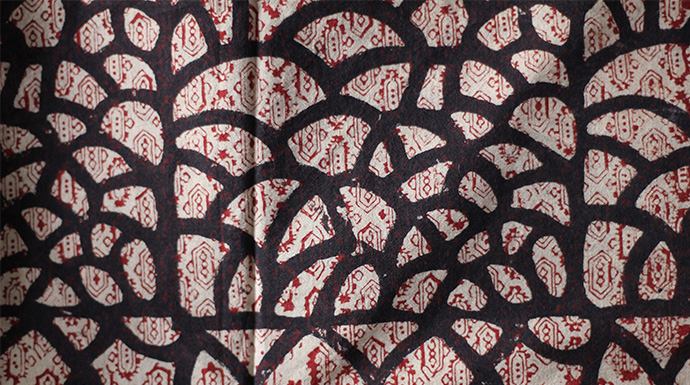
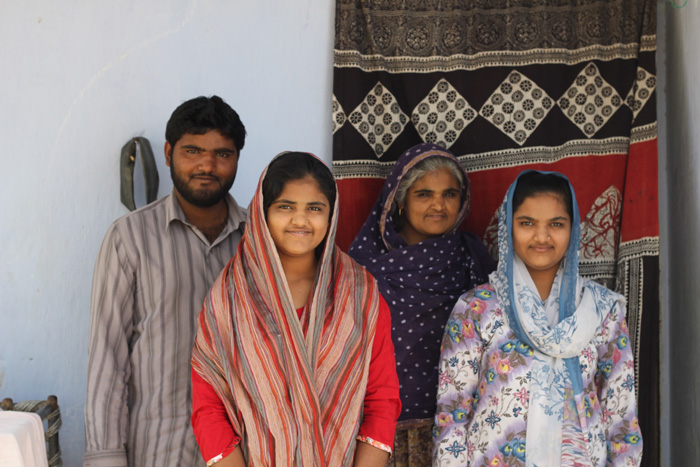
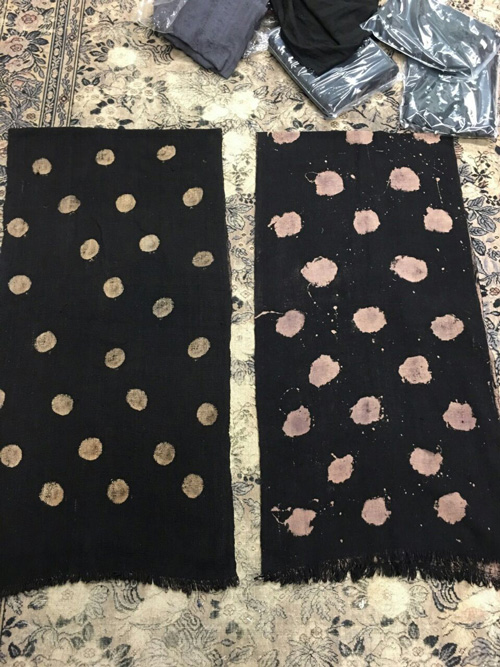
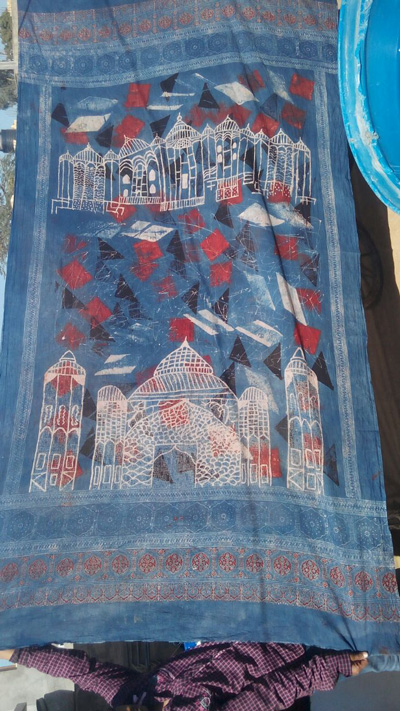
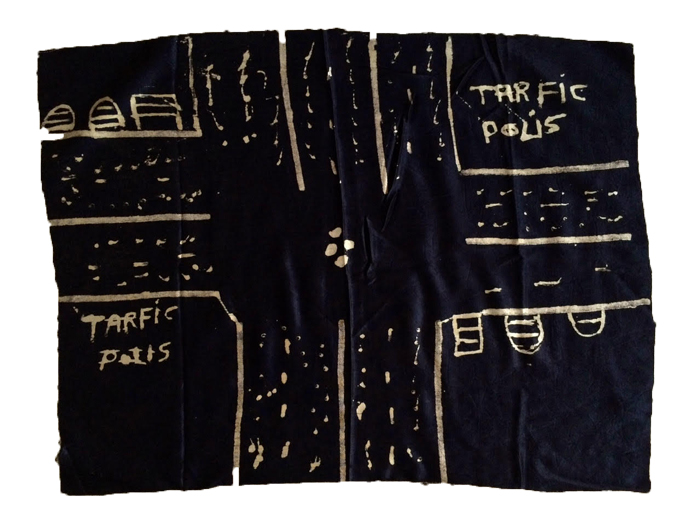
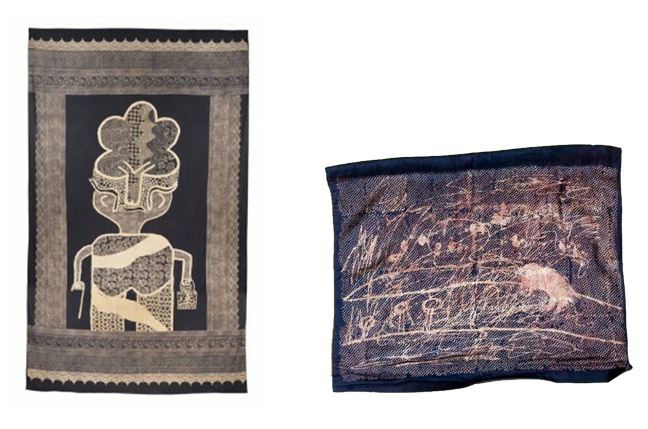
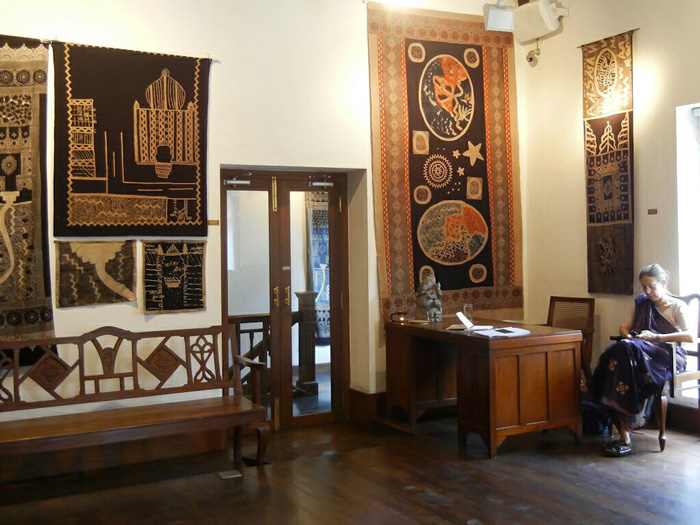
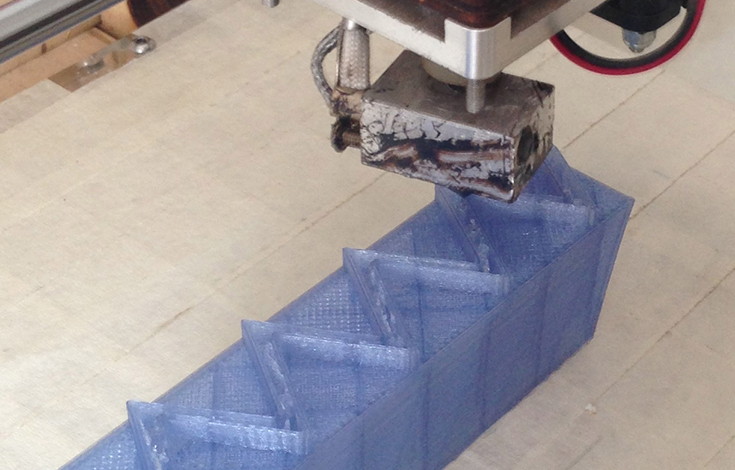
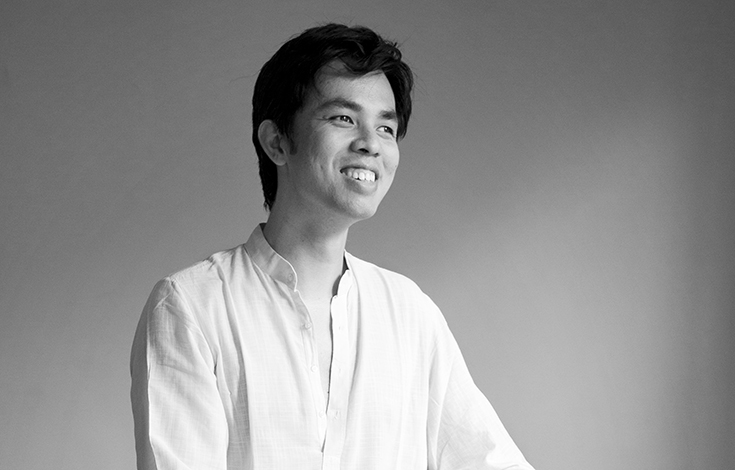
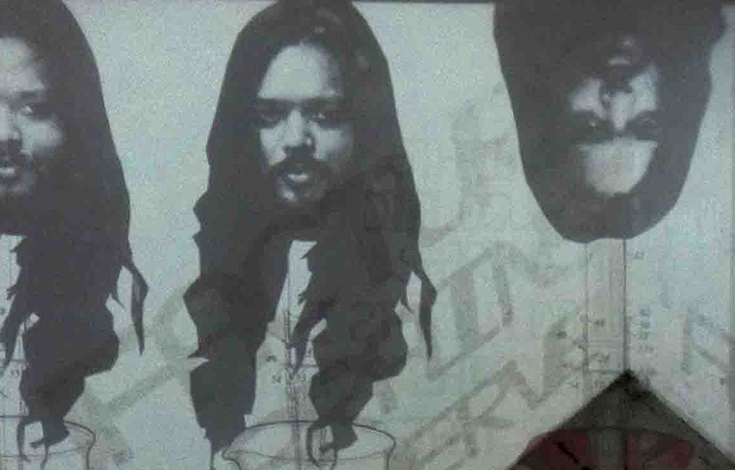
Comment